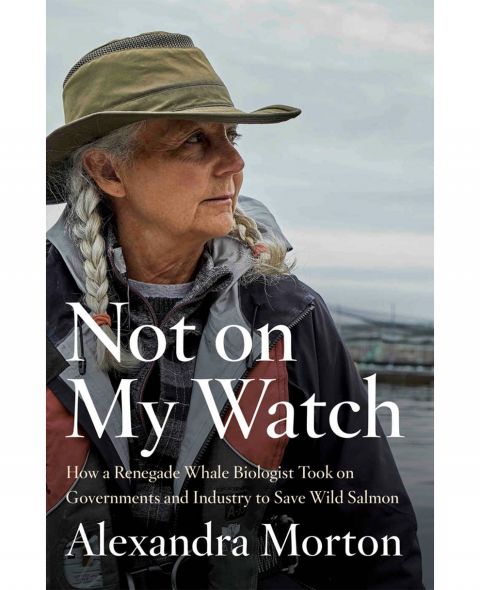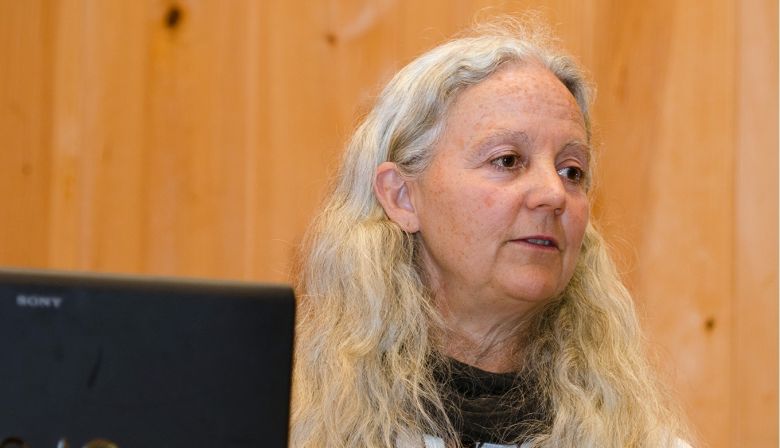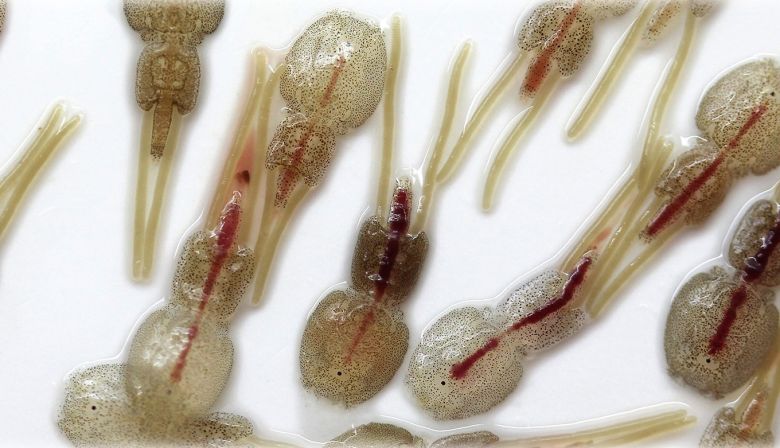
Subscribe & stay up-to-date with ASF


Alexandra Morton has written an infuriating book that, by rights, should create sufficient uproar to bring a rapid end to a perverse experiment to rear Atlantic salmon in the Pacific.
Morton moved to Canada from the U.S. in 1980 to study whales — “I had planned a quiet, obscure life studying orcas” — but became radicalized by what she saw happening to the ecosystem that whales depend upon for their survival. She admits at the outset of her book that from the chrysalis of a diligent field scientist has emerged an impatient activist, and she makes no apologies for that.
Inspired as a young girl by legendary primatologist Jane Goodall (to whom she has since been compared), Morton notes that Goodall, “a beacon, assures scientists that it’s okay to be an activist — that morally, you have to be an activist. I can now add that it feels good to be an activist. It feels good to refuse to allow yourself to be chased — to turn around and meet those who are killing the planet with everything you are.
“I am part of the resistance movement against extinction,” she writes. “The movement spans the globe. We are a force of nature. Like a river, we well up, slip around, bore through and dive under obstacles. We don’t stop.
Young Alex Morton did pioneering research at Marineland in California recording sounds made by killer whales in captivity, and in 1979 made her first trip to the British Columbia coast in search of the family from which those whales, Corky and Orky, had been removed from the wild. She met her husband Robin Morton, a filmmaker, during her second summer of research in B.C. They lived and worked on a boat with her young son until in 1984 they made their base in the tiny hamlet Echo Bay — off grid, no phones, no ferry, a population of about 200 people including several young families. “It was extremely social.”
Near the end of their second year there, disaster struck. Robin drowned while filming whales. “Everyone thought I would leave this place after Robin died,” she writes. Her father wanted her to return home with her son to New England. “I told him I was home.”
Johnstone Strait, which forms a long stretch of the Inside Passage between northeastern Vancouver Island and the mainland, used to be what Morton calls “a superhighway for… millions of salmon that pulsed through in huge waves, moving from open ocean feeding grounds to their spawning rivers — the finest food an orca could wish for.” This was Morton’s new stomping ground, and she was an eager student.
In 1988, fish farms started appearing in the Broughton for the first time. Echo Bay was struggling to keep its one-room school open so, “like other parents in the neighborhood, my first reaction to the new farms was to hope they would bring families with children to the area and keep our school open.”
After a local fisherman, Billy Proctor, alerted Morton to various problems with farms — occupying the best fishing grounds, overcrowding leading to diseases in the farmed fish, pollution of the seabed, hazards to navigation, salmon farmers shooting seals attracted to the pens, and most worrying, the disappearance of overwintering wild chinook salmon — Morton typed her first letter to the Department of Fisheries and Oceans, asking they take seriously the concerns of her community.
“They wrote back: ‘Dear Ms. Morton, there is no evidence…’”
Ten thousand pages of letters she wrote (Morton kept track), adding more evidence as the industry’s impacts grew: escaped Atlantic salmon being discovered in Pacific rivers, coho salmon in local hatcheries erupting with boils that became open sores and killed them. There would be more.
“I did not have proof that all these things were caused by the farms, but my letters should have triggered a government response.” She simply hoped experts would be sent to investigate. But in the Kafkaesque world of resource management in B.C., the province is responsible for “farms” despite the fact the impact of the farms is on wild fish, which are regulated by the feds. Each told her to contact the other.
If neither government cared a fig for anecdotal reports, Morton thought, naively, that they would respond to science. She wrote paper after paper on a range of threats to the ecosystem she studied deeply. What she was worried about then — what we should all be worried about still — was this:
“Salmon farms are a kind of feedlot: they raise as many animals as possible as fast as possible, in as small a place as possible, on an unnatural diet. Feedlots break all the natural laws that keep wild populations healthy, largely because they breed out genetic diversity, they crowd creatures together and prevent predators from removing the sick and dying. As a result, sick animals linger in feedlots, dying slowly and shedding disease particles as they go, infecting those around them. This not only causes an exponential increase in disease organisms, it turns the pathogen world upside down, encouraging viruses to become more lethal. In the wild, virulent pathogens are snuffed out because they kill their hosts, but in feedlots the hosts just keep coming so virulence escalates unfettered.
“All other feedlots, except salmon farms, are sealed off from the natural environment. Chicken feedlot operators prevent wild birds from landing and taking off from their feedlots, because the threat of avian flu is too great. Yet the province of British Columbia and Canada, as a whole, allow salmon farms to release streams of waste and pathogens into the pristine habitat of the once-abundant wild salmon.”
Thus, “The decision to swing the door wide open to salmon farms was a decision to slam the door on wild salmon.”
Morton minces no words in leveling the charge that governments and industry alike “knew about this risk and they were more than willing to take it.” The DFO opened up our coast to (mostly) Norwegian promoters and investors, they ignored their own restrictions on imports of Atlantic salmon eggs into B.C. waters (to safeguard against exotic diseases), and they failed to follow the advice of the Science Council of Canada that they “consult with Indian people” before letting salmon farms in.
“Somewhere in Norway a map of British Columbia lay on a table,” she writes. “Phone calls were made. The invasion began.”

So too, the resistance.
In 1991, there was an outbreak of furunculosis, a bacterial disease that ruptures into open sores on fish. Morton says the farm in question covered up the outbreak, but it spread to a local hatchery tended by community volunteers from Echo Bay. DFO sent drugs but never checked to see if the bacteria spread to wild stock. Two years later, boils appeared on the skin of coho salmon, irregular pus-filled lumps covering their bodies. DFO sent a different drug. Then Atlantics started showing up in local rivers and feeding in the wild, even though DFO said they wouldn’t survive outside their net pens. DFO did nothing.
In 2001, a fishing lodge owner pulled up at Morton’s dock and showed her two salmon fry (young salmon) in a bucket, covered in sea lice. Morton emailed DFO and for once they showed interest, a biologist asking her to collect some infected fish for the government to examine. She caught five lice-encrusted fish, packed them on ice, took them to town in her boat, and shipped them on a bus to DFO’s biological station in Nanaimo at her own expense. A few days later a black DFO Zodiac boat pulled up and an armed woman in a uniform knocked on her door. “I’m here to charge you with poaching. You caught five undersized salmon without a scientific licence.”
“That was the start of the sea lice years,” Morton writes.
In the fall of the next year, she says, 99 per cent of the Broughton pink salmon that migrated to sea through the sea louse epidemic did not return. “My warnings had been ignored for over a decade, and now industry appeared to be killing off massive amounts of wild fish. If I had been charged for poaching five young fish, what should happen to those responsible for destroying millions?”
Not a whole lot, apparently. To this day, sea lice continue to attack young migrating salmon whose numbers are dwindling fast. In the meantime, Morton produced more scientific papers, took more samples, trekked to remote villages where outbreaks occurred — in short, did things fisheries managers employed by a $3-billion department with 12,000 employees should do.
By now a true activist, Morton at one point went to Oslo to attend an annual meeting of Marine Harvest (one of the biggest operators on our coast, since rebranded as Mowi.) “I was at last among the people who were profiting from the destruction of the waters I called home. I looked around, fascinated. These were well-dressed Europeans who mingled easily with each other. I was in a thrift-shop dress and I have never gotten the hang of makeup. I felt impossibly out of place.”
During a short turn at the podium, she told shareholders of the damage being done to B.C.’s wild salmon and pointed out they could fix at least some of the problems simply by moving their farms off wild salmon migration routes in Canada. She writes that as she left the stage, the board chairman laughed into the mic and said, “I hate to disappoint you, but we are not going anywhere.” Nor have they, and nor have the sea lice and all the other problems that Morton and others have so diligently observed and reported.
Then came the virus years.
In 2009, there was a profound collapse in the Fraser River sockeye salmon run. Morton writes, “Only 1.5 million out of a forecasted 10.6 million fish returned to the river, and many of these fish were found dead on the riverbanks before they could spawn. Fisheries managers had no idea why this was happening, but they knew this is what populations look like in the moment before extinction.”
Of course, by now you can guess the script. Industry denies that a virus (piscine orthoreovirus, or PRV) could cause this to happen, and DFO refuses to study it. Morton, and others, observe and report and publish peer reviewed scientific evidence of harm that is challenged by industry and DFO. Morton sues the feds four times (and wins each time; she is back in court right now), with the federal court eventually ruling that DFO is obligated to study and report on the effects of PRV. The feds, by the way, spend a reported $2.3 million of taxpayer’s money fighting Morton and the ’Namgis First Nation.
Morton arrived in the Broughton Archipelago to study orcas, not to pursue activism. Like Rachel Carson whose ‘Silent Spring’ exposed the devastating effects of DDT on bird food chains, Morton wanted to know what was ailing the whales’ food — salmon. Photo: Alexandra Morton.
Close to home, Morton supports a citizen-led occupation of one of Mowi’s farms. She throws in her lot with Paul Watson’s Sea Shepherd Conservation Society, despite misgivings — “it was hard enough to get people to believe my science without being associated with a group that had a reputation for ramming ships in the Antarctic to protect whales.” She asks local First Nations leaders for advice and they have no such qualms. Soon the Martin Sheen is on its way to the Broughton.
Far from her “quiet, obscure life” studying whales, she is now a very public centre of attention. And the target of an anonymous photographer shooting pictures of her with a telephoto lens from the window of an unmarked van; virulent social media attacks; accusations of bias; questions about her funding: all textbook acts of personal intimidation.
At one point she discovers that an organization called Black Cube has set up shop in Campbell River and has posted want ads for “risk management personnel” in five local towns. Black Cube bills itself as a “select group of veterans from the Israeli elite intelligence units that specialises in tailored solutions to complex business and litigation challenges.” Soon, men in boats with blacked out windows start tailing her boat as she travels to and fro. Phones are hacked. This, in the country that the world knows as a peace-loving bastion of democracy and freedom of speech and thought.
Why? Because she was and is a threat. Because salmon farming, like big tobacco, like big oil, like big ag, is big business. Farmed salmon produced about $800 million in landed value in 2018, according to BC Salmon Farmers’ public reports. B.C. is ranked as the fourth-largest producer of farmed Atlantic salmon in the world. Salmon farming is the province’s largest agri-food export. And “the aquaculture industry worldwide is worth $160 billion and accounts for half of the world’s fish consumption,” according to the New Yorker.
It is high time we had a Noisy Spring. When I started reading Morton’s book, I thought of Rachel Carson, author of the ground-breaking 1962 book, Silent Spring. Carson documented the dire costs to nature’s food chain caused by use of DDT to control insect pests in agriculture.
“Rachel Carson’s alarm touched off a national debate on the use of chemical pesticides, the responsibility of science, and the limits of technological progress,” writes Linda Lear in the introduction to a modern edition of the book.
In the ensuing outcry, DDT was banned and Carson’s writing “initiated a transformation in the relationship between humans and the natural world and stirred an awakening of public environmental consciousness,” Lear writes. Carson was a marine biologist for whom “the pollution of the environment by the profligate use of toxic chemicals was the ultimate act of human hubris, a product of ignorance and greed she felt compelled to bear witness against.” Sound familiar?
‘Every politician should be judged by their reaction to this book,’ writes the reviewer.
Alex Morton’s Not on My Watch, like Silent Spring, should touch off a national debate about rights and obligations, and while we’re at it, about decolonization. If Not on My Watch needs to be peer reviewed, those peers should include ordinary people with a thirst for justice and common sense. And every politician should be judged by their reaction to this book.

Morton advocates near the conclusion of her book for a Department of Wild Salmon, and says she’s written another letter to DFO, this one suggesting it create a new position, the Director of Wild Salmon-Pacific Region, and name her as the first occupant of that role.
I beg to differ. I think the last thing we need is another government department of anything, and that Alex Morton would last about an Ottawa minute behind a government desk.
I agree with her that we need to seek wisdom from First Nations Elders “to rebuild governments based on human and nature as one.”
I also think we need a respectful way for First Nations that have been drawn to the economic benefits of salmon farming — while their fishboats sit idle, rotting at their moorings because there are no wild fish to catch — to be able instead to embrace their own natural laws, to be given resources to transition away from an industry that transitioned them away from their wild salmon in the first place.
One place to actually begin decolonizing this country would be to give back control of our fisheries to Indigenous governments. Ask any First Nations person on the coast about wild salmon and they’ll tell you they are fundamental to their history, their health and their future. Salmon farms, by contrast, are the logical denouement of colonization — breaking bonds that for millennia allowed Indigenous peoples to survive, to thrive, in one of the richest regions on Earth.
So no, not a department. How about a country of wild salmon where, as Morton puts it, we “create a community among the people learning the language of salmon.”
Andrea Reid, a Nisga’a fisheries scientist, assistant professor at the University of British Columbia and principal investigator at UBC’s Centre for Indigenous Fisheries, said in these pages recently, “Many people identify as salmon people and have relationships with the fish.… They’re treated much more like a relative than a product, and I think that has profound implications for how we interact with salmon.”
Imagine, then, a country in which we treated salmon like our relatives. We did everything we could to ensure their growth, their health, their prosperity and their happiness. We recognized that their success is our success, and we fought for them in the knowledge that a threat to them is a threat to us all.
Are salmon farms the only source of threats to our wild salmon? No, but this book convinces me they do have to go — on Alexandra Morton’s watch, and on ours. This is not a zero-sum game. There are good jobs to be had in restoration and recovery from other threats like logging and mining, and, one day, when we have a real fishery again, there’ll be fishing jobs again too.
If we get out of their way, the wild salmon will come back, because as Morton says, “they are masters at the art of thriving.” When they come back, we need to pay humble attention as they replenish the gift exchange between all of us who call this place home. If we are lucky, they’ll give us another chance.
The fight for wild salmon is about much more than fish. This is not the time to give up.
https://thetyee.ca/Culture/2021/03/29/Alexandra-Morton-Book-Galvanize-Action-Salmon/